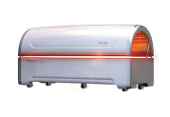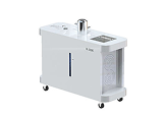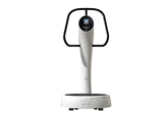Brain- Photobiomodulation for the Aging Brain
Ageing Research Reviews (2021) | University of Texas at Austin & Universidade de Mogi das Cruzes
Photobiomodulation for the Aging Brain
What Did They Discover?
Researchers found that photobiomodulation (PBM), using red-to-near-infrared light (620–1100 nm), can reverse age-related declines in brain metabolism and cognition.
It enhances mitochondrial activity, improves blood flow, and reduces oxidative and inflammatory stress in both animals and humans.
How Does It Work?
Photons from near-infrared light are absorbed by cytochrome-c-oxidase (CCO) inside mitochondria.
This increases ATP production, releases nitric oxide to dilate blood vessels, and promotes oxygen use and neural signaling.
The 1064 nm wavelength, in particular, has been shown to increase oxidized CCO and oxygenated hemoglobin in the human brain — verified as a non-thermal biological effect.
Why Does It Matter?
As we age, mitochondria lose efficiency and the brain’s oxygen supply drops, leading to cognitive decline.
PBM provides a drug-free, non-invasive therapy that targets the root metabolic cause of brain aging, supporting memory, focus, and overall brain health without adverse effects.
Key Mechanisms
Mechanism
Supporting Evidence
Mitochondrial activation
PBM increases CCO activity and ATP synthesis in aged animal brains (Salehpour 2017; Cardoso 2021).
Improved cerebral blood flow
Human studies (Salgado 2015; Vargas 2017) show higher middle-cerebral-artery velocity and enhanced EEG/BOLD signals.
Anti-inflammatory regulation
PBM lowers microglial activity and increases IL-10 while reducing pro-inflammatory cytokines in aged rats.
Neuroprotection & synaptogenesis
Light therapy modulates apoptotic proteins (Bax/Bcl-2), increases BDNF, and promotes dendritic growth.
Optimal wavelength & dose
1064 nm penetrates deepest due to lower scattering; 3 J/cm² yields maximal ATP gain (Sharma 2011; Rojas 2012)
Conclusion
Aging naturally impairs brain metabolism, blood flow, and memory.
Across multiple studies, photobiomodulation has consistently improved these functions by boosting mitochondrial energy, enhancing oxygenation, and reducing inflammation.
No adverse brain effects have been reported in either healthy older adults or patients, positioning PBM as a safe and promising approach to combat age-related cognitive decline.
Ageing Research Reviews (2021) | University of Texas at Austin & Universidade de Mogi das Cruzes
Photobiomodulation Treatment Device
Hyperbaric Oxygen Chamber
Hydrogen Inhalation Machine
Nano-bubble Hydrogen
Water Generator
Whole Body Wave
Motion Exercise Device
Nitro Biome
BAHI Longevity
Product Background
References
Customer Center
Get In Touch
- Haan-ro, Gwangmyeong-si, Gyeonggi-do, Republic of Korea
- +82)2-898-2116
- info@huelight.kr
Copyright 2025 © Hue Light Co., Ltd. All rights reserved.
Disclaimer: The medical papers and academic information provided on this site are intended for educational purposes only and are not meant to
diagnose, treat, prevent diseases, or substitute for a doctor’s advice.





